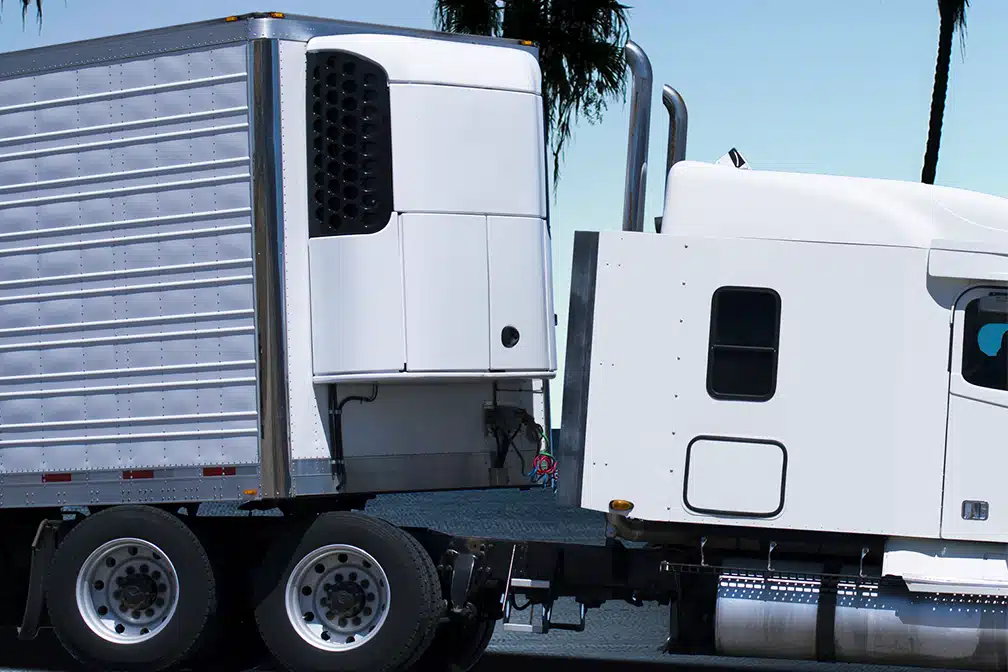As the trucking industry navigates through regulatory mandates and operational challenges, the conversation around Electronic Logging Devices (ELD) remains a hotbed of debate. Instituted with the intent
More
May 19, 2024 9:24 pm

The California Air Resources Board (CARB) is dedicated to improving air quality and reducing air pollution in California. CARB has implemented regulations to cut down on emissions, from refrigeration units in trucks and trailers.
One key focus for CARB has been on reefers, which are refrigeration units powered by both internal combustion engines (ICE) and electric motors. The ICE operates while the truck or trailer is moving whereas the electric motor kicks in when the unit’s stationary during loading and unloading helping reduce emissions and noise pollution.
In 2013 CARB rolled out the TRU (Transport Refrigeration Unit) Airborne Toxic Control Measure (ATCM) mandating that all TRUs in California adhere to stringent emissions standards. Hybrid reefers can be used as a compliance option under this measure if they meet criteria.
To meet ATCM requirements hybrid reefers must feature an engine that meets CARB’s Tier 4 emissions standards – the level for non-road diesel engines, in the U.S.
The hybrid refrigerated container must also have a motor that can provide a minimum of 20% of its cooling capacity when not in motion.
Furthermore, the hybrid refrigerated container should come with a battery monitoring system to monitor the charge and health status of the batteries. These batteries are meant for cycling allowing them to be charged and discharged times without damage. This is crucial as the electric motor operates when the container is stationary requiring the batteries to retain their charge over extended periods.
Apart, from emission standards CARB has implemented regulations concerning the voltage of refrigeration units. Specifically all Temperature Regulated Units (TRUs) in California are required to adopt a 480 VAC system by 2023.
The 480 VAC system aims to decrease emissions and noise pollution by enabling refrigeration units to run on power while idle. By utilizing electricity than an Internal Combustion Engine (ICE) these units can mitigate both emissions and noise pollution.
To adhere to the 480 VAC mandate TRUs must be outfitted with a 480 VAC power source, which can either be a fixed generator or an outlet, at a distribution hub. The TRU should also have a voltage monitoring system that can identify voltage decreases and take actions if needed.
The 480 VAC system is part of CARBs initiatives to cut down emissions, from transportation. The organization has set goals to decrease emissions from trucks and trailers in California aiming to reduce greenhouse gas emissions from the transport sector by 40% below 1990 levels by 2030.
In general CARBs rules for reefers and the 480 VAC system aim to lower emissions and enhance air quality in California. By promoting the use of reefers and mandating electric power usage when parked CARB seeks to lessen emissions and noise pollution from refrigeration units, in the transport industry.
As the trucking industry navigates through regulatory mandates and operational challenges, the conversation around Electronic Logging Devices (ELD) remains a hotbed of debate. Instituted with the intent
MoreSeveral US States Are Addressing Major Concerns Regarding Autonomous Trucking. Among Their Concerns are: Safety, Jobs, and Regulation.
MoreIn an era where the safety of our roads is paramount, the Commercial Vehicle Safety Alliance (CVSA) has announced pivotal changes to the North American Standard Out-of-Service
MoreWalmart, the retail giant that touches the lives of millions across the United States, is not just about stocking shelves
MoreRyder's latest white paper provides a comprehensive, data-driven analysis of the true costs of electric truck conversion across truck classes
MoreIn the trucking world, where rugged power and durability often take center stage, there is a timeless appreciation for the
MoreTrucking News: In Florida, a significant legislative effort is underway to revise the state's left lane traffic regulations, a move
MoreIn a dramatic turn of events this past weekend, United Auto Workers, UAW and Daimler Truck North America (DTNA) reached
More